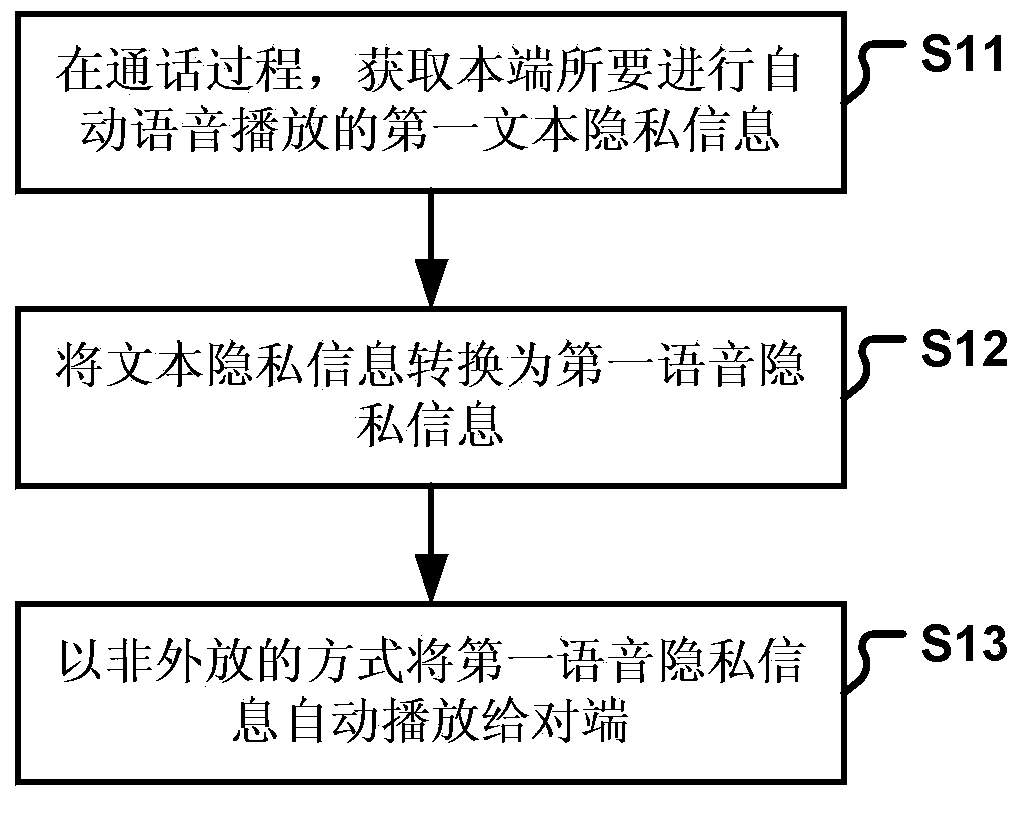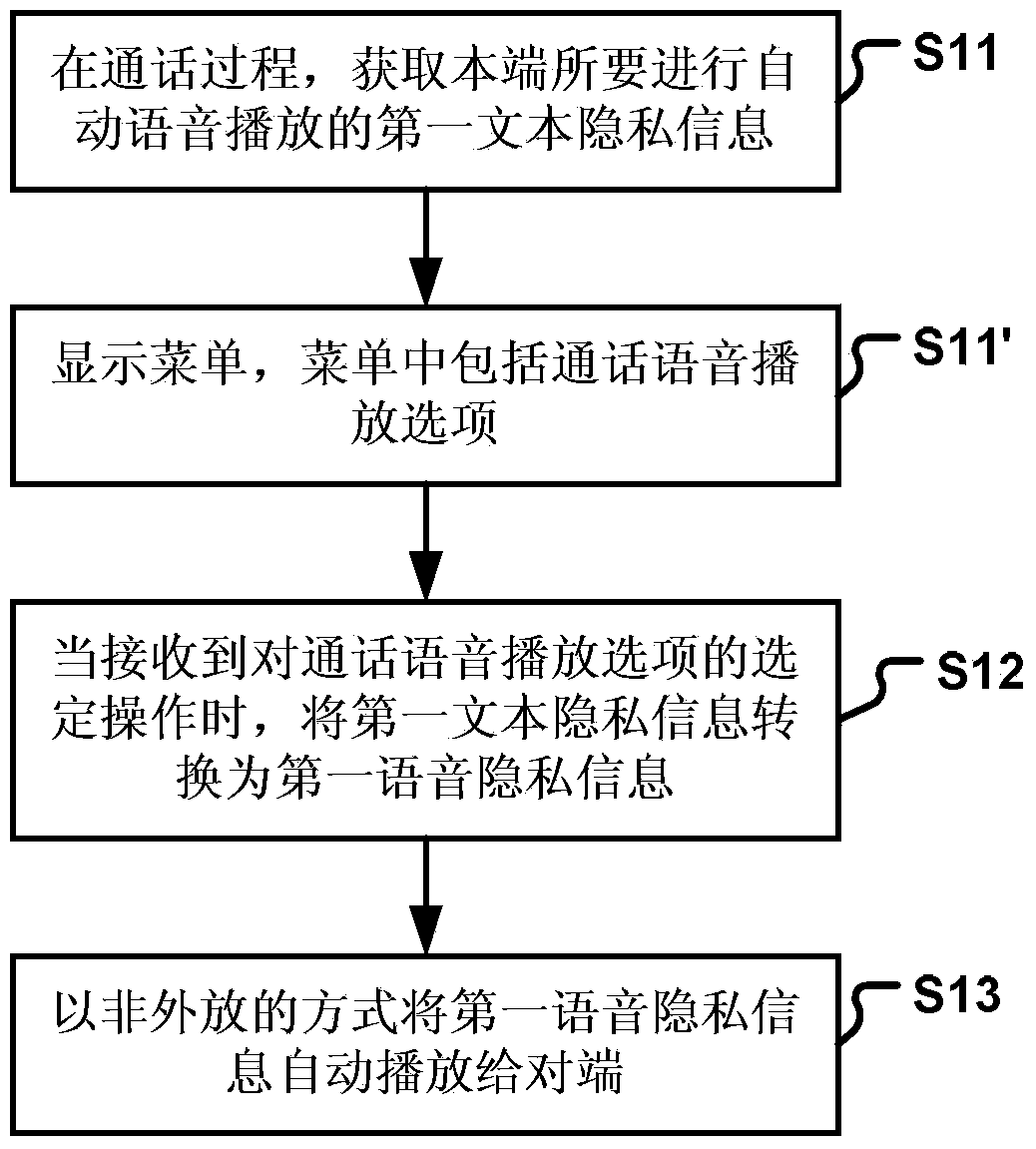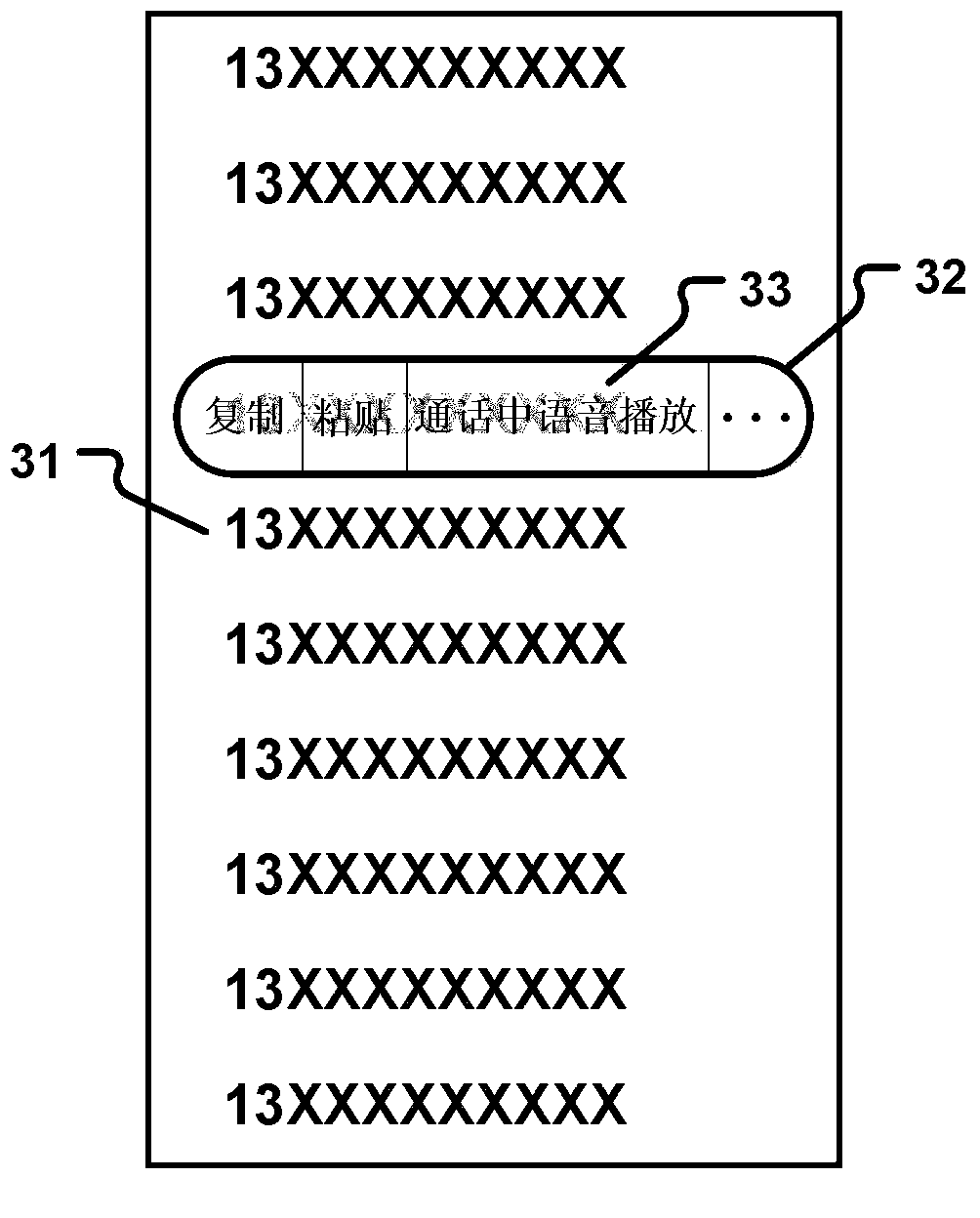Conversation method and device
A technology for a calling device and a calling process, which is applied in the fields of telephone communication, instruments, voice analysis, etc., can solve the problems of inconvenience of informing the other party, easy leakage of user private information, poor call privacy, etc., to facilitate follow-up inquiry and protect user privacy. , the effect of improving privacy
- Summary
- Abstract
- Description
- Claims
- Application Information
AI Technical Summary
Problems solved by technology
Method used
Image
Examples
Embodiment Construction
[0098] Reference will now be made in detail to the exemplary embodiments, examples of which are illustrated in the accompanying drawings. When the following description refers to the accompanying drawings, the same numerals in different drawings refer to the same or similar elements unless otherwise indicated. The implementations described in the following exemplary examples do not represent all implementations consistent with the present disclosure. Rather, they are merely examples of apparatuses and methods consistent with aspects of the present disclosure as recited in the appended claims.
[0099] figure 1 is a flow chart of a call method shown according to an exemplary embodiment, such as figure 1 As shown, the calling method is used in the terminal and includes the following steps.
[0100] In step S11, during the call, the first text privacy information to be automatically played by the local end is acquired.
[0101] In step S12, the text privacy information is con...
PUM
 Login to View More
Login to View More Abstract
Description
Claims
Application Information
 Login to View More
Login to View More - R&D
- Intellectual Property
- Life Sciences
- Materials
- Tech Scout
- Unparalleled Data Quality
- Higher Quality Content
- 60% Fewer Hallucinations
Browse by: Latest US Patents, China's latest patents, Technical Efficacy Thesaurus, Application Domain, Technology Topic, Popular Technical Reports.
© 2025 PatSnap. All rights reserved.Legal|Privacy policy|Modern Slavery Act Transparency Statement|Sitemap|About US| Contact US: help@patsnap.com



